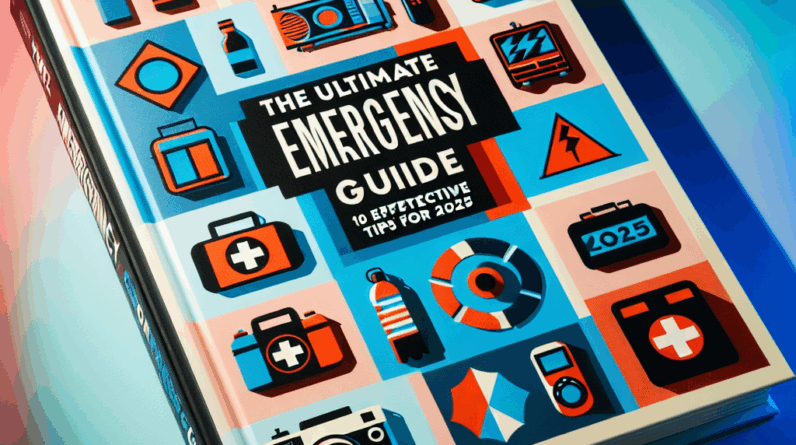Emergency evacuations can be daunting, but with the right preparation and knowledge, they can be handled smoothly and efficiently. From devising a detailed evacuation plan to ensuring that your team is well-trained, each step is crucial for safety and efficiency during an emergency. Let’s explore these practices in detail to ensure you’re fully prepared for any situation.
Prepare Your Emergency Plan
Identifying exit routes early in your planning process is critical. Knowing multiple, clear paths out of your building can significantly ease the panic during an evacuation. Make it a point to memorize these exits and consider creating a visual map to aid recall. Don’t forget to explore alternative routes as well, since primary exits might be blocked during an emergency. Accessibility for individuals with mobility issues should also be part of your planning process, ensuring everyone’s safety.
Communication is the backbone of effective emergency management. Assigning specific roles to team members before an emergency strikes can make a significant difference. Have regular meetings to discuss roles, allow team members to express concerns, and ensure everyone understands their responsibilities. This encourages teamwork and ensures smooth execution during actual emergencies. Keep everyone in the loop through various communication methods like emails, handouts, or group texts.
Having an emergency supply kit is essential. This kit should include items such as water, flashlights, first-aid materials, and a map of the area. Store these supplies in an easily accessible location, and maintain a checklist to keep the supplies updated and ready to use. Customize your kit to cater to the needs of all individuals, including children and pets, to ensure everyone is taken care of.
Practice Regular Evacuations
Conducting regular drills is non-negotiable. Frequent drills help familiarize everyone with the evacuation plan, reducing confusion and improving reaction times during actual emergencies. Simulate different scenarios to prepare for a variety of emergencies, and use these drills as an opportunity to gather feedback on what works and what doesn’t. Incorporating a competitive element, like awards for best performance, can make these drills more engaging.
Ensuring everyone’s participation is key to successful evacuations. Encourage all team members to be actively involved in planning and executing drills. This not only prepares them better but also fosters a sense of ownership and responsibility towards safety procedures. Regularly engage the team in discussions about emergency scenarios to keep them alert and prepared.
After each drill, gather everyone for a feedback session to discuss the outcomes and identify areas for improvement. Keep organized records of these discussions to track progress and inform future drills. Encouraging feedback and fostering a team-oriented atmosphere are critical for continuous improvement in emergency preparedness.
Ensure Communication Channels Are Open
Leverage technology to enhance communication during emergencies. Set up systems like group chats or emergency management apps to deliver timely alerts. However, always have a backup communication plan, such as designated individuals for verbal updates, in case technology fails.
Keep your contact lists updated regularly to ensure that you can reach everyone quickly during an emergency. Make these lists easily accessible to all team members and encourage them to update their preferred methods of communication.
Regular check-ins help maintain open lines of communication and foster a supportive culture. These can be informal, such as coffee chats or virtual meetings, making them more engaging and less cumbersome.
Train Your Team
Training is crucial for preparing your team for emergencies. Conduct regular training sessions that include hypothetical scenarios to help team members practice their responses to stress. Consider hiring professional trainers for specialized training in areas like fire safety and first aid.
Explore certification opportunities in emergency response skills such as CPR or first aid. These certifications not only boost confidence but also underscore the importance of preparedness. Make these sessions engaging and informative to maximize participation and retention of knowledge.
Promote an open learning environment where team members feel comfortable asking questions and sharing insights about emergency preparedness. Maintain accessible resources like documents, videos, and links to encourage ongoing education.
Review and Revise Your Plan Regularly
Regularly revising your emergency plan is vital to ensure it remains effective. Conduct annual assessments to address any changes in your environment or team structure and make necessary adjustments. These reviews allow for continuous improvement and ensure that your team remains alert to the dynamics of emergency response.
Encourage feedback from all team members, not just those directly involved in emergency procedures. Consider anonymous methods to gather honest feedback. Regularly update your strategies based on this feedback to keep your plans effective and relevant.
Stay informed about the latest best practices in emergency management. Network with other professionals and participate in discussions to learn from others’ experiences and keep your approaches up-to-date.
FAQs
1. What is the most important step in an evacuation plan?
While all aspects are important, preparing your emergency plan thoroughly is foundational to a successful evacuation. This includes knowing your exits, understanding roles, and having necessary supplies ready.
2. How often should drills be conducted?
It is recommended to conduct drills quarterly to keep everyone well-versed in the evacuation procedures and ready for unexpected situations.
3. How should communication be handled during an emergency?
Using technology for immediate communication is crucial. Ensure there’s a reliable point person for updates and a backup communication plan in place.
4. Why is training important for emergency evacuations?
Training equips your team with necessary skills and confidence to handle emergencies effectively, reducing panic and improving overall safety.
5. How can I encourage feedback on our emergency plan?
Create an inclusive environment where everyone feels comfortable providing feedback. Use anonymous surveys and encourage open discussions to foster a culture of continuous improvement.




